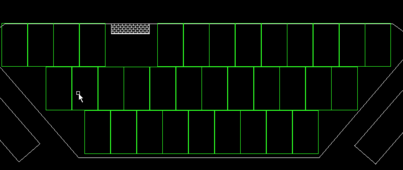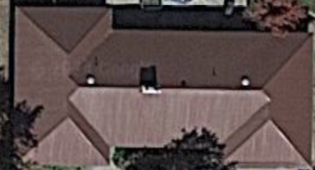Hi Everyone,
Getting into the weeds on my new solar build and I've got a question. I'm going to end up with 36 solar panels on my roof. They'll be grouped into 4 strings of 9 panels in series. This complies with my requirements from the panels and sol-ark 15k. My question is, does it matter how I group them?
Assuming I'll have 3 rows of panels, do I just group them by the rows and a couple groups span multiple rows? Or - Do I do more of a grid grouping, IE the first 9 panels to the east are grouped, then the next set of 9, etc. So it would be my like a 3x3 array.
I think there will be a little shading to deal with on the lower row from a tree. The tree may get a trimming as a result.
Here's a rough sketch of what I'm looking at: The white lines are my "safety zone" of where I can place the panels in the roof. There's a few inches of roof space on each side. The brick looking thing is my chimney.

Yes - There are also only 34 panels on that drawing. I have a hipped roof so the roof is broken up a bit so I'm going to have to put 2 panels on the little side sections. One faces S-SE and the other S-SW.
I've got 340W panels on order and should be here in a couple weeks so the panels are already set.
Thanks!
Getting into the weeds on my new solar build and I've got a question. I'm going to end up with 36 solar panels on my roof. They'll be grouped into 4 strings of 9 panels in series. This complies with my requirements from the panels and sol-ark 15k. My question is, does it matter how I group them?
Assuming I'll have 3 rows of panels, do I just group them by the rows and a couple groups span multiple rows? Or - Do I do more of a grid grouping, IE the first 9 panels to the east are grouped, then the next set of 9, etc. So it would be my like a 3x3 array.
I think there will be a little shading to deal with on the lower row from a tree. The tree may get a trimming as a result.
Here's a rough sketch of what I'm looking at: The white lines are my "safety zone" of where I can place the panels in the roof. There's a few inches of roof space on each side. The brick looking thing is my chimney.

Yes - There are also only 34 panels on that drawing. I have a hipped roof so the roof is broken up a bit so I'm going to have to put 2 panels on the little side sections. One faces S-SE and the other S-SW.
I've got 340W panels on order and should be here in a couple weeks so the panels are already set.
Thanks!




